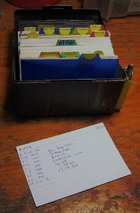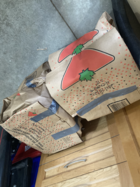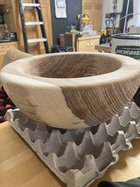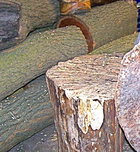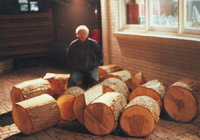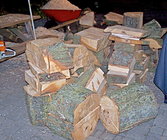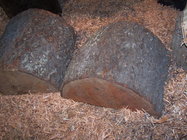A lot of good information here. Thanks everyone. My main concern was with cracking/drying prematurely. I figured that the quicker I got the inside roughed out and to an even wall thickness, the less chance of small cracks forming. At this point I've just been burying my roughouts in the wet shavings to prevent drying out early.
Lou, I like the idea of having a plastic-lined barrel to dump the blanks in prior to sealing/storage.
Marc, I'm not necessarily going for maximum number per hour, but it's nice to get into an assembly-like groove (and at this point in my turning journey, trying to go a bit faster is helping with making efficient cuts). I 100% agree with you though about the units of pleasure--ultimately that's why I like turning, for everything you mentioned. It's somewhat of a pain to have to keep switching out drives/chucks between each step, though some different equipment would help with this (ex, I usually start between centers so I can balance the grain a bit easier if necessary, so a drive center that I can close in my chuck would be nice to have). I read about things like Bill Luce turning 10,000 bowls of the same shape just to perfect the process and the form, and it seems so out of reach. Whether that example is hyperbole or not, being able to maximize units/hour gives me more opportunities to find the form of something. That said, if I start to feel like a robot I'll probably hate turning.
Odie, I was also mostly curious of others' approach (I also like the index cards, and appreciate your detailed descriptions in your gallery posts). This is my current process:
- Chainsaw half-log (or whatever other orientation)
- Seal the half log with Anchorseal (or equivalent--has anyone used Bailey's before? 5 gallons for $80 sounds nice)
- Once ready to turn, cut corners off with chainsaw (I don't have a bandsaw at this point)
- Mount blank (sometimes between centers, sometimes with a screw)
- True the blank, form shoulder and tenon, and shape the outside (i've used a glue block as part of this process as well, though only with dried wood)
- Mount in chuck, and rough the inside (and if necessary, refined the outside)
- Seal endgrain of bowl, record weight, store blank, and check weight occasionally
- Finish turn (and everything involved) once blank has equalized with environment
I bolded the last two steps, because I don't yet have much personal experience with those.
Ron, I agree that green turning is fun. It's always nice to sling wet shavings after working with some dry wood. And I'm amazed how quickly surface rust appears on the ways. I remember you recommending PB Blaster in another thread--still have to buy some of that. I've just been scotchbrite pad/paste waxing my ways occasionally.
Al, I like your batching approach, especially with the signing, buffing, photographing.
Paul, thanks for the input. I haven't thought about this before, but I like your approach of weighing representative bowls. I'm guessing your representatives are of the same species and type (sap vs heart) as the rest?
@Rip Littig, I agree about the larger tenon adding stability. At this point the largest jaws I've used (or needed) are 100mm jaws, but in the future I can see needing/wanting larger jaws. My only chuck is a Nova G3, which is nice for some things, and is becoming problematic for others (that's a whole different can of worms). I try to work on pieces that require similar tenons, as changing jaws is become tiresome (not that bad, but the allure of a owning a second chuck is getting stronger and stronger, haha!)
Edited to respond to Rip's comment.

